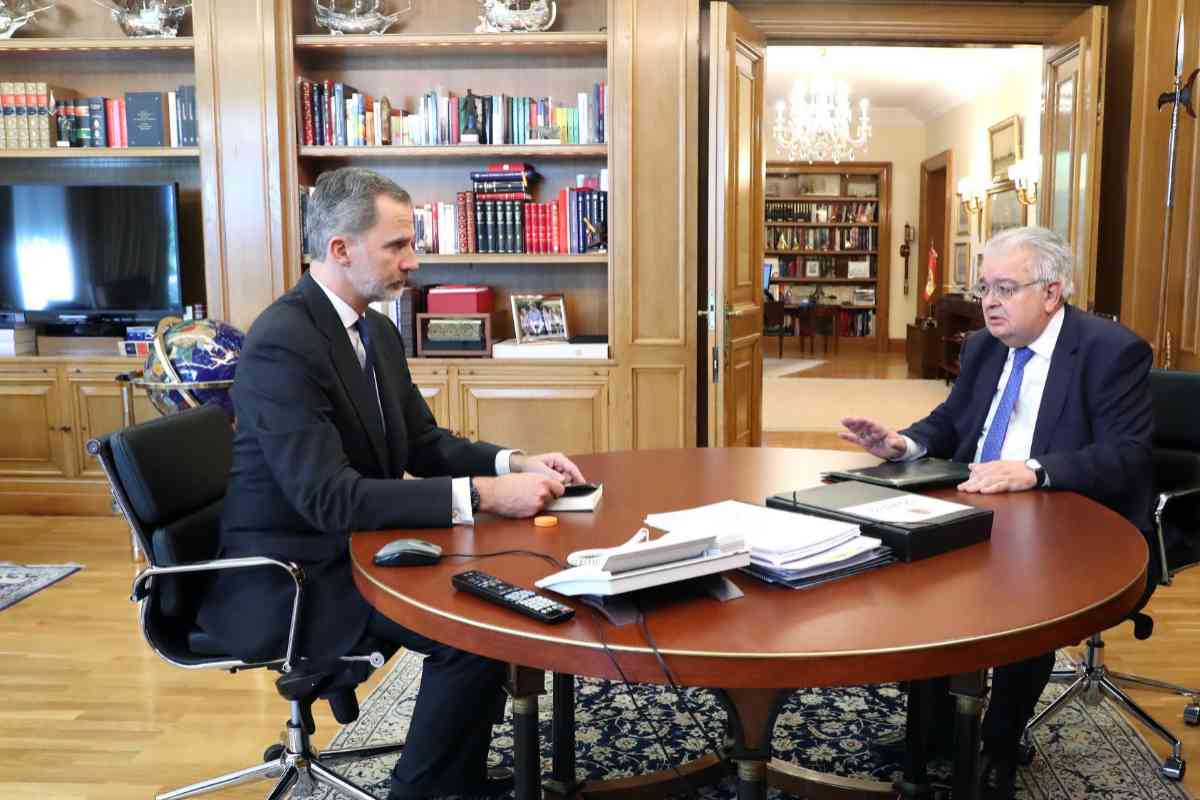- Phases: Felipe and Letizia, sentimental de-escalation to boost the Crown
- Duel: The Princess and the Infanta, in the minute of silence of the Royal Family in Zarzuela
- Ancestors. A Cuban, a disease ... The story of the true successor of Alfonso XIII who would have prevented his nephew, Don Juan Carlos, from reigning
The Kings continue their particular de-escalation, alternating the first official events outside of Zarzuela with the frenetic rhythm of acts in the office that have developed since the state of alarm was decreed.
In 70 days of confinement, Don Felipe and Doña Letizia have made more than 250 video calls to closely follow the evolution of the pandemic and to show their support for all kinds of affected groups, in addition to having had a good number of personal encounters in the office with senior government officials, including almost all government ministers.
At the moment, Their Majesties are going to continue with that agenda of video calls, although departures from Zarzuela are going to be more and more frequent, such as the one carried out this Monday when they attended a meeting of the Scientific Council of the Elcano Institute.
And through the images offered by the Casa del Rey of those video calls and meetings in the Palace, we have been able to verify that Don Felipe has turned his office into a true artistic museum .
There are many works of art, including paintings, lithographs or sculptures, that impress the lucky visitor or video spectator who can penetrate the workplace of the Head of State. But, in addition, LOC has not overlooked that Don Felipe has installed one of those next- generation televisions with a 4K LED screen that, when in on mode, show photos or works of art like a painting. It is at least what emerges from the images that are spread daily these days.
Two well-known paintings appear superimposed on the screen in many of the meetings: The Garden of Earthly Delights , by the brilliant El Bosc or, and El Quitasol , by Goya . The two works appear and disappear like two removable paintings according to the moment or circumstances of the Monarch's appointment.
But not everything is ephemeral art in the King's office. On the contrary. It is well endowed with authentic artistic jewels, many inherited by Don Felipe from his father, Don Juan Carlos, who accompanied him almost four decades in the same office that the current King now occupies.
Undoubtedly, the imposing cosmic athlete stands out, painted by Dalí in 1968. This oil on canvas is embedded in the wooden-lined walls of this unit with fireplace and window to the garden, and is owned by National Heritage. He has been in Zarzuela since the 70s, when, according to what they say, Don Juan Carlos fell in love with him; love at first sight. Dalí explained that the character represents "the Spanish people, capable of carrying out the most implausible feats." And since in the Casa del Rey they are very given to transmit subliminal messages through non-verbal communication, who knows if the fact that these days appear in so many photographs of the Kings is a way of saying that the Spanish will now be able to overcome the titanic feat that represents the fight against the coronavirus and the economic crisis so harsh that it is coming.
In 2017, when the Catalan independence movement's offensive against the Crown had already begun, ERC unsuccessfully tried to get Dalí's painting to leave Zarzuela and to be handed over "to the Catalans". "What we propose is that it be transferred to the Barcelona City Council, which already has the reproduction rights assigned by the painter himself," demanded Senator Bernat Picornell. The majority parties in the Senate rejected the claim of the secessionists. And in some brilliant intervention, some socialist parliamentarian congratulated himself that the current King Emeritus had had as good artistic taste as his ancestors.
Because let us not forget that thanks to patronage and a real interest in the arts of the Kings of the Austrian and Bourbon dynasties, Spain has had the most important royal collections of painting from around the world since the 15th century , which are exhibited in Art galleries such as the Prado Museum, and attract millions of art-loving tourists every year.
Presiding over the business meetings behind the main table in the King's office, an eighteenth-century oil painting by Antonio Rafael Mengs stands out, showing Carlos III in armor. The one known as "best mayor of Madrid2 is one of Don Felipe's favorite ancestors. In this case, the Monarch did decide to change this painting for the one that occupied the same space during the reign of Don Juan Carlos, who always covered his back the painting of Philip I of Parma as a child, by Jean Ranc, for a portrait of King Charles III, by Mengs, belonging to the Museo del Prado collection.
Lastly, a portrait of Alfonso XIII by Philip Alexius de Laszlo, the brilliant Hungarian painter (1869 - 1937) who worked for different Spanish Courts and who made so many portraits of Alfonso XIII, his wife, Victoria Eugenia de Battenberg, and of all your children.
In accordance with the criteria of The Trust Project
Know more- Stay at home
- Queen Letizia
- Philip VI
Casa RealFelipe and Letizia, sentimental de-escalation to boost the Crown
Casa RealFelipe and Letizia, anniversary confined and without celebration (as is usual for them)
Royal HouseThe Infanta Sofia turns 13: the special attention that her mother, the Queen, devotes to her so that she does not feel displaced

